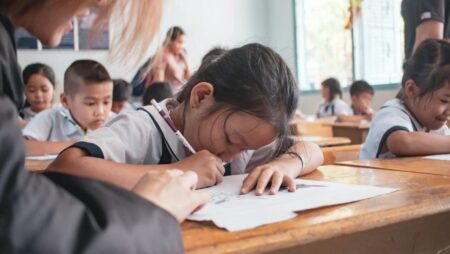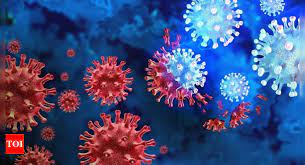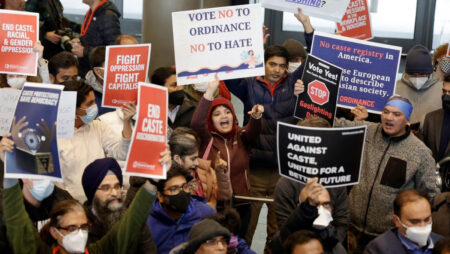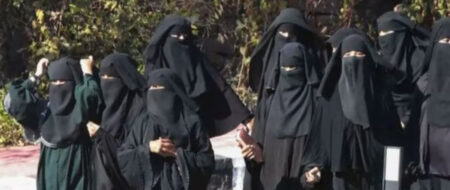Comprehensive sexuality education is an evidence- and rights-based approach to healthy decision-making. India needs to impart it in its schools now more than ever to move beyond the birds and the bees.
It’s no surprise that sex is taboo in India, and it’s visible in how we approach the subject from a young age or when we first learn about it.
Sex is a term we can’t say out loud, and it’s a topic that’s often met with an embarrassing “Ahem!” or “Shush!” that makes us look around to make sure no one heard us.
Ironically, the same topic that we generally avoid is that everyone should discuss openly, and it is something that parents should talk about with their children.
But, in this day and age of the Internet, social media, and unrestricted access to information, how can we be sure that youngsters are receiving accurate information on sex and sexuality?
Especially in the absence of a thorough, in-depth discussion at home and at school? How do we ensure that children and young adults are well-versed in sexual health, choice, consent, and safety?
It’s past time to campaign for a comprehensive sex education programme that includes more than just birds and bees.
Sex Education or Sexuality Education?
Sex education is not the same as sexuality education. Because the phrase Comprehensive Sexuality Education, or CSE, is more thorough and inclusive, we prefer to use it. Giving knowledge on sexuality is not the same as teaching someone how to have sex.
It covers gender roles and identities, sexual anatomy and physiology, how sexuality affects one’s welfare, how one’s sexuality interacts with family or community, how that makes one feel, discussing one’s sexual partner choices, expressing one’s sexual identity, and so on.
Sexuality education equips young people with the knowledge, skills, and attitudes they need to thrive as adults. CSE additionally supports the emotional, physical and psychological development of the students.
How young is too young?
There is a plight for beginning sex education at a young age, as young as even kindergarten. Parents, teachers, and other concerned people want their children to grow up knowing how to live a healthy, happy, and whole life.
We enrol them in music and art lessons, athletics, and other activities in addition to putting them through school. Why don’t you ask them about their bodies and minds? The purpose of sexuality education is dual.
It enhances well-being by improving young people’s quality of life and relationships and avoiding potentially adverse outcomes of sexual behaviour such as unwanted pregnancies, sexually transmitted illnesses, and child sexual abuse.
Comprehensive Sexuality Education is not an all-in-one lecture concerning the ‘birds and bees.
It is a continuous process of presenting accurate body information (in language appropriate for the young person’s age and stage) and having dialogues about values, attitudes, issues, rights, and responsibilities.
It’s about assisting individuals in navigating changes in their bodies and how they feel about them; giving and receiving consent; gender or body type diversity; and what relationships or marriages involve, among other things.
As a result, CSE is a significant issue that must address accordingly. In addition to providing instructors with training and additional support, systems and curricula must be in place. And all children, regardless of their age, gender, or whether or not they have a disability, require CSE.
The case of two countries:
The Netherlands supports a comprehensive sex education curriculum, educating kids as young as four years old about sex and sexuality.
The dialogues aren’t overtly about sexual activities but rather about love, respect, and intimacy, to expose youngsters to various facets of sexual health each year.
What’s the result? In terms of teen pregnancies and sexually transmitted diseases, the Netherlands has one of the lowest rates globally, and it’s also one of the most gender-equal nations on the planet.
On the other hand, the American Sexual Education curriculum emphasises abstinence rather than comprehensive sexual education.
As a result, the curriculum often focuses less on contraception options, resulting in the United States ranking first among Western countries regarding teen pregnancies. Among developed countries, the United States also ranks first in terms of STIs in teenagers.
Likewise, the United States struggles to fund proper sex-ed classes, relying on not-for-profits, many small, to produce and manage the curriculum.
Indian Cultural Furore:
Culture is a mash-up of many different beliefs and activities, not all of which are good. Sati and child marriage were also part of Indian’ culture,’ but people do not generally demand restoration.
The mere presence of something in our society does not imply that it is good, and the absence of something from our culture does not mean that it is terrible in and of itself. Furthermore, culture is not changeless, and it is in the process of changing and evolving.
Thirty years ago, it was uncommon for South Asian women to seek professional courses and degrees.
In comparison to 10-15 years ago, school ‘culture’ has also altered dramatically. Many teachers today use cutting-edge technology in their classrooms.
New courses have been introduced in schools to keep up with the skills required of young people in the coming years.
So why not CSE? We’re not only talking about child abuse. Our educational systems have tacitly dismissed the significance of addressing adolescent sexuality for a long time – at least not in “our backyard.”
However, the truth is that these concerns are present everywhere –
Teachers with whom we have engaged talk about their students’ relationships, gender identity questions, gender equality involvement, and so on. It suggests that sexuality issues are the elephant in the room, which we must address!
What can India Do?
The Indian government, in reality, recognises the necessity of providing information to young people in school for their physical, emotional, and psychological development. The programs that are currently ongoing are:
- Rashtriya Kishor Swasthya Karyakram (RKSK)
- Adolescence Education Programme (AEP)
India requires to impart comprehensive sexuality education in its schools now more than ever. As in the pandemic, adolescent girls have been encouraged to embrace incorrect menstrual hygiene methods due to misconceptions and a lack of resources.
The risk to girls’ reproductive health is increasing while schools remain closed. Early marriage is on the rise as a result of their dropping out of school.
Surprisingly, 27 per cent of Indian women marry before they are 18, and 52 per cent of married women aged 15 to 19 have already started having children.
As the pandemic and its allied constraints on schools continue, it is more crucial than ever to guarantee equal access to online spaces to safeguard adolescents’ health, education and mental well-being.
Teenagers can be prepared with the tools and information to make informed decisions about their health by advocating for excellent, comprehensive sexuality education in schools and ensuring access to sexual and reproductive health care.












